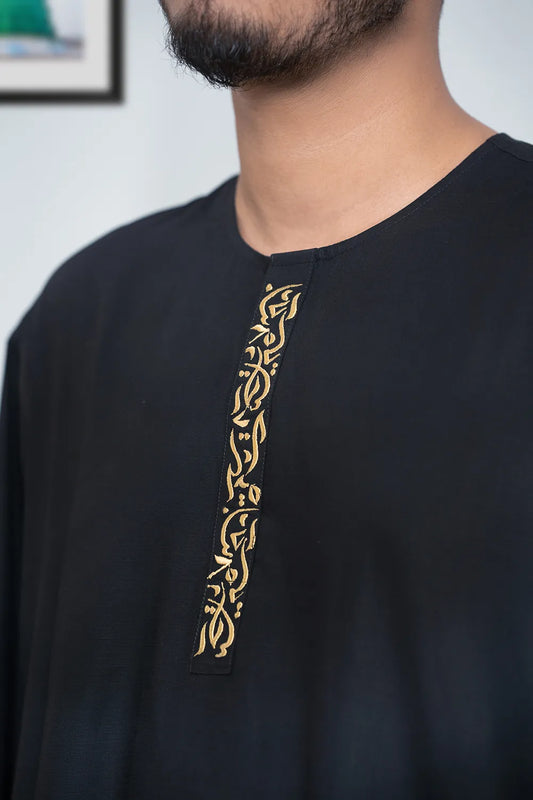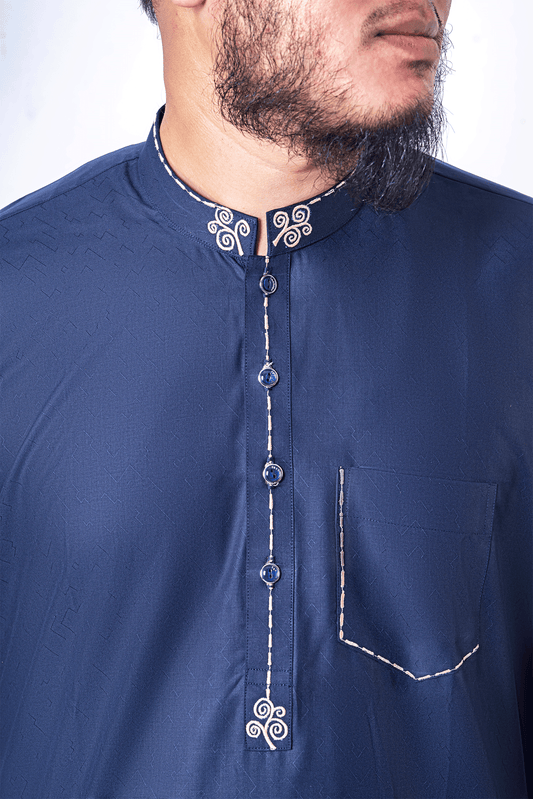Introduction
Geometric patterns are the genesis in Islamic art, changing domes, walls, and fabrics into awe-inspiring works of harmony and spirituality. The most famous examples are the elaborate mosaics in Spain's Alhambra and the star-and-polygon patterns of Persian mosques They provide more than decoration. They represent a language of unification, infinity, and the divine order. We look at the significance, meaning and long-lasting legacy of geometric patterns found in Islamic design.
1. The Symbolism of Geometric Patterns

Islamic geometrical patterns are based on the notion that symmetry and repetition represent the perfectness of Allah's design. The most important symbols are:
- Stars along with Polygons They represent cosmic harmony as well as the interconnectedness of all life.
- Infinity Knots: symbolize the eternal nature of the Divine.
- Floral Arabesques: Combining nature and geometry The motifs represent paradise.

Tailor a thobe to fit your size

No measurements required

Worldwide delivery

30 days easy return
A Fun Fact It is said that the Alhambra, situated in Spain, has more than 100 distinct geometric patterns that showcase the Nasrid mastery in this art. Discover Spain's Islamic architectural marvels to view these patterns in person.
2. Historical Origins: From Ancient Persia to Al-Andalus
Geometric patterns first appeared around the 8th century, being influenced by Greek, Roman, and Persian mathematical practices. The most important milestones were:
- Umayyad Era: The early Islamic artists embraced Byzantine mosaics and added the complexity of geometrical design.
- Golden Age of Al-Andalus: Spain's Great Mosque of Cordoba and the Alhambra raised the art of geometric design to new levels.
- Mughal India: The Taj Mahal's pietra dura-inlay elegant floral-geometric fusion.
3. Techniques: How Geometric Patterns Are Created


Islamic artists made use of simple tools like a straightedge and compass to create stunning intricateness:
- Tessellation Repetition of shapes (triangles or hexagons) to create a full plane with no gaps.
- Zellige Tilework: Hand-cut Moroccan tiles forming star-and-cross patterns.
- Muqarnas: Geometric vaulting 3D in niches and domes.
Example: The Alhambra's Court of the Lions makes use of twelve-sided star patterns to make a captivating floor. Find out more about the history of Spain's geometric heritage.
4. Iconic Examples of Geometric Mastery
A. The Alhambra, Spain

The Alhambra's Sala of the Abencerrajes ceiling is decorated with an 8,000-piece pattern of stars, representing the universe.
B. The Great Mosque of Isfahan, Iran

Its moreab (prayer niche) utilizes 10-pointed stars to symbolize the 10 commands that are part of Shi'a Islam.
C. The Ben Youssef Madrasa, Morocco

Zellige tilework is used to cover walls using hexagons and pentagons interlocking as a tribute to Marinid skill.
D. The Dome of the Rock, Jerusalem

The mosaics inspired by Byzantine incorporate floral and geometric motifs and reflect the early Islamic synthesis.
5. Geometric Patterns in Modern Design

In the present, Islamic geometry inspires architects as well as fashion designers and digital artists.
- Architecture: The Louvre Abu Dhabi's dome is a representation of the interlaced patterns of stars.
- Fashion: Designers such as Elie Saab have incorporated arabesques into haute couture.
- Digital Art: Algorithms recreate old patterns using high-quality fractals.
Did you know? The Alhambra's patterns have inspired mathematicians who study quasicrystals. Explore Spain's role in geometrical innovation.
Conclusion
Geometric patterns are much more than art. They are a bridge that connects math, spirituality, and the world of culture. They range from the Spanish Alhambra to the modern-day high-rises; these designs continue to inspire and captivate. No matter if you're an artist, tourist, or historian and want to know more about Islamic geometry, it will give you a better admiration of it's timeless splendor.



 https://sunaan.com
https://sunaan.com










